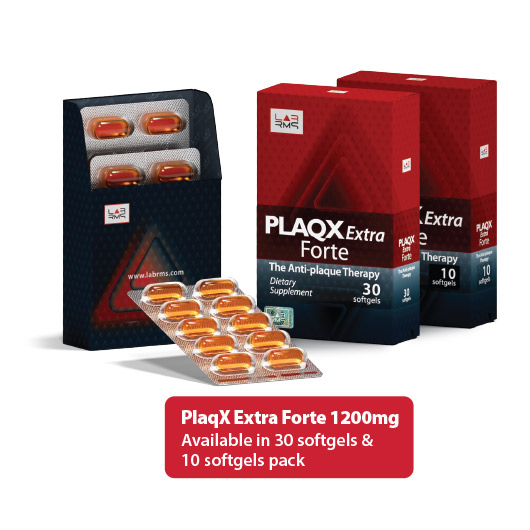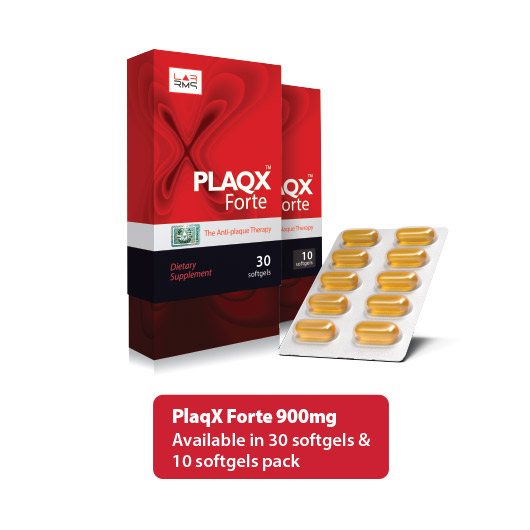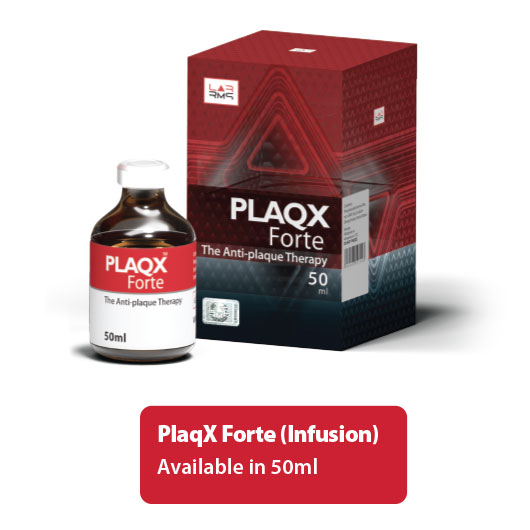PLAQX FORTE & PLAQX EXTRA FORTE
THERAPY FOR YOUR HEART, LIVER, KIDNEY & BLOOD VESSELS
A time-tested Swiss-based treatment for Plaque build-up since the 1950s, perfected with decades of research in modern medicine and LAB RMS’s dedication to health and safety, PlaqX Forte / Extra Forte is a Natural Supplement derived from Non-GMO Soy that delivers excellent results and ease of use.
INCREASE
Increases HDL (High Density Lipoprotein)
REDUCE
Lowers LDL (Low Density Lipoprotein) and VLDL (Very Low Density Lipoprotein) and Triglyceride levels
IMPROVE
Improve kidney and liver function in patients
BENEFIT OF TAKING PLAQX
- Clears out plaque build-up
- Promotes healthy total cholesterol level
- Increases HDL (High Density Lipoprotein)
- Improves liver function
- Rejuvenates cell membranes
- Lowers LDL (Low Density Lipoprotein) and VLDL (Very Low Density Lipoprotein)
- Lowers Triglycerides
- Improves kidney function
- Maintain cell membrane integrity and fluidity
LDL Cholesterol
50% of volunteers experienced reduction of LDL cholesterol.
Visceral fat reduction
40% of volunteers experienced reduction of visceral fat volume, range from 2.7-7.3cm2.
Cell integrity
100% of volunteers showed maintained cell health and integrity.
*(Based on LABRMS’ Plaqx Extra Forte internal studies conducted with volunteers over a 3-month period.)
THE SYNERGY OF PLAQX FORTE & PLAQX EXTRA FORTE
Both PlaqX Forte and PlaqX Extra Forte contain the same active ingredients – however, PlaqX Extra Forte is designed for individuals who require a higher concentration of high-purity Phosphatidylcholine, and the new formulation offers a vegetal-based option to users.
 |
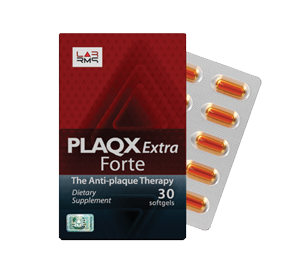 |
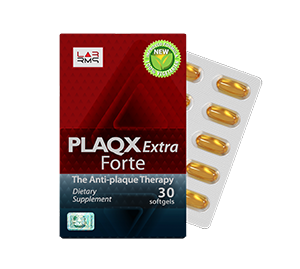 |
|
| Product Specification | PLAQX FORTE | PLAQX EXTRA FORTE | NEW FORMULATION PLAQX EXTRA FORTE |
| Active Ingredients | Polyenylphosphatidylcholine | Polyenylphosphatidylcholine | Polyenyl PC complex |
| Bioactives | Polyenylphosphatidylcholine | Polyenylphosphatidylcholine | Polyenylphosphatidylcholine, Phosphatidylserine, Alpha Tocopherol |
| Unique selling proposition | High concentration Polyenylphosphatidylcholine | Higher concentration of high purity Polyenylphosphatidylcholine |
Phyto therapeutic supplement formulated with Polyenyl PC offer better efficacy and bioavailability in supporting cellular membrane health, maintaining healthy cholesterol levels and liver functions. 100% vegetal based formulation with plant-based softgel. |
| Active ingredient dosage per capsule | 900mg | 1200mg | 1200mg |
| Recommended dosage | 1 or 2 softgels per day | 1 softgel per day | 1 softgel per day |
| Country of origin | USA | Switzerland | Switzerland |
| Storage | Room temperature, keep away from sunlight. | Room temperature, keep away from sunlight. | Room temperature, keep away from sunlight. |
| Contraindication | Some may experience slight stomach discomfort that will subside within a day of supplementation. It may not be suitable for those with allergies to soy and soy-based products. | Some may experience slight stomach discomfort that will subside within a day of supplementation. It may not be suitable for those with allergies to soy and soy-based products. | Some may experience slight stomach discomfort that will subside within a day of supplementation. It may not be suitable for those with allergies to soy and soy-based products. |
| PLAQX FORTE INFUSION: Intravenous administration | |||||
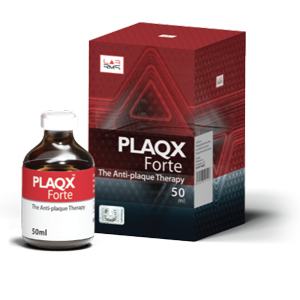 |
Active ingredients:
Polyenylphosphatidylcholine, |
PC concentration:
Higher dosage (1250mg – 2500mg) |
Absorption and bioavailability:
By-pass the intestinal absorption to deliver maximum nutrients into the blood stream. |
Storage:
Store between +4°C to +16°C |
Contraindication:
Not for individuals who are: |
WHY YOU NEED PLAQX
Our blood vessels transport oxygen and vital nutrients to various parts of the body. Hindering this basic, life-supporting functionality is plaque, which accumulates over time from substances such as fat and cholesterol, causing the blood vessels to get clogged up. This results in serious and potentially fatal diseases – including strokes and heart attacks. LAB RMS PlaqX Forte and PlaqX Extra Forte are specially formulated to help clear out this plaque, e ectively acting as a personal clean-up crew for our blood vessels!
HOW IT WORKS
LAB RMS has improved the original Plaqx Extra by fortifying its existing formulation with Phosphatidylserine and Alpha-tocopherol.

Phosphatidylserine (PS) is a negative charge phospholipid synthesized by Polyenylphosphatidylcholine (PPC) via the CDP choline pathway. Fortification of PS in this formulation will increase the bioavailability of PPC to organs demanding this nutrient and allow PPC to be utilized for its primary role, which is supporting cellular membrane health of various organs instead of being broken down to produce PS. PS is more concentrated in the brain, while PPC is abundant in cellular membranes and mitochondrial membranes.
PS is also known for enhancing blood coagulation; hence the concentration of the bioactive is added at the lowest concentration, not to affect the coagulation rate but just enough to improve and support Polyenylphosphatidylcholine (PPC).
Alpha-Tocopherol is also added into the formulation to protect PPC from degradation and improve formulation stability. Alpha tocopherols are also an efficient scavenger that protects cell membranes and other fat-soluble parts of the body from oxidative damage. This improvement in the formulation is deemed to increase the product efficacy and improve the formulation stability, guaranteeing the formulation’s safety and effectiveness. Moreover, this batch is 100% vegetarian with a plant-based softgel shell, making it suitable for all groups of people, including our vegetarian and vegan consumers.
PlaqX Extra Forte is formulated with Polyenyl PC complex, a proprietary blend of Polyenylphosphatidylcholine, Phosphatidylserine and Alpha Tocopherol. Back in 1865, Oscar Liebreich described Polyenylphosphatidylcholine as ‘’the mother substance of all” – it is now known as a phospholipid ingredient that is responsible for maintaining cell membrane integrity, reducing intestinal cholesterol absorption, enhancing reverse cholesterol transport, and removing fatty and hardened plaque from blood vessels which are then transported to the liver, where it will be redistributed to other tissues or excreted out from the body by the gallbladder. By enhancing reverse cholesterol transport, it will lower LDL cholesterol and triglyceride levels in the blood serum.
Polyenylphosphatidylcholine is the predominant circulating phospholipid in plasma, serving multiple roles in the body:
- Acts as an essential component of the cellular membrane. It adds fluidity and promotes stability and function of transmembrane
proteins, including the membranes of energy-producing mitochondria, neuronal and intestinal cell membranes. - Has antioxidant, cytoprotective and fluid-regulating effects.
- Integral component of lipoproteins, especially HDL, which are involved in the transport of cholesterol from the arterial walls to
the liver for processing. - A major constituent of bile, which is necessary for lipid metabolization.
- Packages cholesterol and triglycerides into very-low-density lipoprotein (VLDL).
- Plays a vital role in cholesterol transport and degradation and helps maintain healthy blood cholesterol and triglyceride levels.
- Reduces visceral fat, which is also known as stubborn belly fat.
Each cell membrane in the body is composed of 65% phosphatidylcholine. A deficiency of phosphatidylcholine may cause the cell membrane to be susceptible to oxidative stress and damage, causing dysfunction in the brain, digestive tract, and liver.
FUNCTIONS &THERAPEUTIC APPLICATION OF POLYENYLPHOSPHATIDYLCHOLINE
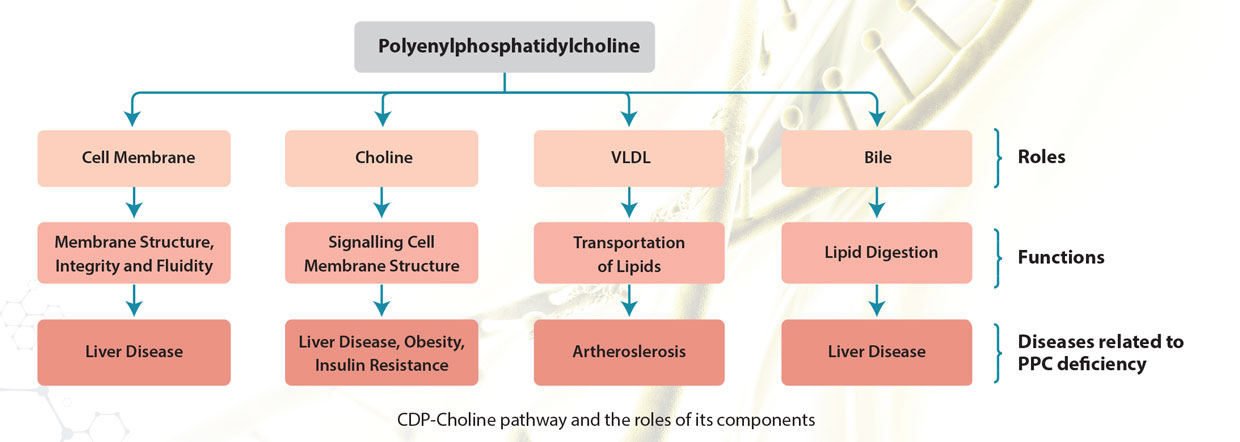
POLYENYLPHOSPHATIDYLCHOLINE SUPPORTS CELL MEMBRANE INTEGRITY AND FLUIDITY
Polyenylphosphatidylcholine, also referred to as phosphatidylcholine, is an important type of phospholipid and a major structural component of cell membranes. It provides integrity and structure to the cell membranes including the membranes of energy-producing mitochondria, neuronal and intestinal cell membranes, and regulates fluidity for nutrients and oxygen transport. It is also a major component of the surfactant in the lungs and the mucus in the gastrointestinal tract.
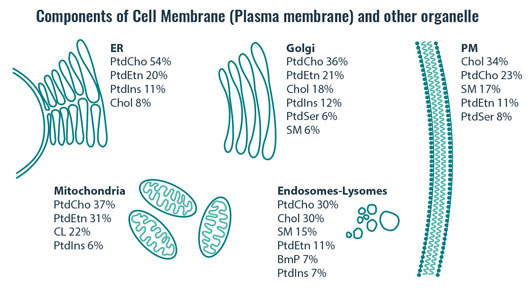
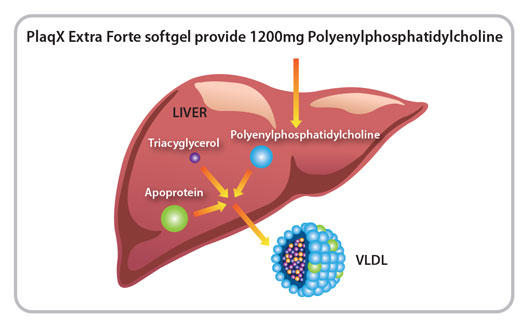
Polyenylphosphatidylcholine is known for its ability to regulate the VLDL secretion. It helps accelerate the lipid transport by favouring the formation of a very low density lipoprotein, providing a vehicle to transport the lipid away from the liver to capillary beds in adipose tissue and muscle, where they are hydrolysed to provide fatty acids that are then oxidized to produce adenosine triphosphate for energy production. Deficiency in Polyenylphosphatidylcholine will slow down the transport of fat, while also causing cell membrane integrity to be compromised, allowing pro-inflammatory molecules such as cytokines to leak into the hepatocytes. This leads to molecular injury, initiating the progression to steatohepatitis.
THE PLAQX FORTE FORMULATION HAS A RICH HISTORY OF SUCCESSFUL TREATMENTS
These compelling before and after pictures demonstrate the efficacy of PlaqX Forte treatment on a 53 year old male who suffered from insulin-dependent diabetes mellitus since he was 5 years of age as well as an active hepatitis C infection of unknown cause and duration.
| Patient | 56 year old male |
| Medical history | Insulin-dependent diabetes mellitus from an acute bout of Vasculitis affecting his toes on the right foot and two toes on the left. |
| Case | Inflamed and swollen blisters on his first and second toes of his right foot developed overnight. Tips of toes turned purple within a few days. Danger of amputation increased due to reduced capillary blood flow caused by diabetes. |
| Diagnosis | Vaskulitis due to cryoglobulins caused by hepatitis C infection. (Diagnosed by the head of the dermatological outpatient clinic at the University hospital of Basel Switzerland) |
| Treatment | 6 months of combined treatment with PlaqX Forte formula and low level laser as well as high dose of Vitamin C |
| Result | Toes saved from amputation |



A LOOK INTO PLAQX FORTE FORMULA'S EARLIEST TREATMENT REPORTS
Patient Nr. 1: B.C., born 1928, male in Hawaii
| Time Period | Case Report |
| 1/98 | Severe angina pectoris with 3 vessel disease, prepared for tripple bypass operation taking various medication including nitroglycerine |
| 2/98 – 10/98 | 20 PlaqX Forte and 10 Chelation treatments |
| 10/98 | Patient needs no medication, a fast CT showed no calcifications in the coronary arteries. Bypass operation is no longer necessary |
Patient Nr. 2: E.H., born 1918, male in Basel
| Time Period | Case Report |
| 11/94 | Patient suffers from angina pectoris, needs nitroglycerine. A PTCA of a RIVA stenosis is performed |
| 2/95 – 7/95 | 18 chelation treatments |
| 3/96 – 5/96 | 5 PlaqX Forte treatments |
| 6/96 | A Thallium stress test shows normal values, done under anti-ischemic treatment |
| 1/97 – 5/97 | 10 chelation and 15 PlaqX Forte treatments |
| 7/97 | A Thallium stress test shows a small ischemia in the apex, done under no anti-ischemic treatment |
| 6/98 – 8/98 | A Thallium stress test shows a small ischemia in the apex, done under no anti-ischemic treatment |
| 08/01 | The patient still is free of symptoms and needs no anti-ischemic medication. The past 2 years he rode his bike on tours of more than 30 miles per day without any problems. |
Patient Nr. 3: G.S., born 1925, male in Basel
| Time Period | Case Report |
| 7/95 | Patient is a strong smoker, has peripheral artery disease, walking distance is limited to 200 meters (1/8 mile), suffers from angina pectoris and a Thallium test shows coronary artery disease |
| 4/96 – 7/96 | 8 PlaqX Forte treatments. The patient no longer has symptoms and needs no medication. |
Patient Nr. 4:A.R., born 1930, female in Basel
| Time Period | Case Report |
| 3/95 | Patient suffers from angina pectoris, takes nitroglycerine |
| 4/95 | A PTCA of 1 coronary artery is performed, after the angiogramm shows a stenosis |
| 6/95 | The patient agains suffers from angina pectoris, even though the Thallium test is normal |
| 7/95 | The angiogramm shows restenosis, another PTCA is performed |
| 9/95 | The angina pectoris returns |
| 9/95 – 12/95 | 8 chelation treatments |
| 1/96 – 4/96 | 22 PlaqX Forte treatments |
| 5/96 | Another Thallium test shows normal values, the patient is free of symptoms |
| 5/96 | 4 PlaqX Forte treatments |
| 2/97 | 5 PlaqX Forte treatments |
| 6/97 | 7 PlaqX Forte treatments |
| 3/98 | 5 PlaqX Forte and 3 chelation treatments |
| 7/98 | 11 PlaqX Forte and 2 chelation treatments |
| 10/98 | 4 PlaqX Forte treatments |
| 04/01 | A Fast-CT shows a normal calcium score. The patient is free of symptoms. |
Patient Nr. 5:R.T., born 1927, male in Basel
| Time Period | Case Report |
| 1969 & 1973 | 2 myocardial infarctions |
| 8/93 | Hypertension, high cholesterol, mitral valve insufficiency, double by-pass operation |
| 1/96 | stenosis of the grafts and other coronary arteries cause angina pectoris. Due to the existing grafts, another by-pass operation or PTCA is impossible. The patient is unable to climb 1 flight of stairs without pain. |
| 1/96 – 7/96 | 50 PlaqX Forte treatments, patient can reduce his medication |
| 10/96 – 12/96 | 19 chelation and 2 PlaqX Forte treatments |
| 4/96 – 6/97 | 10 chelation treatments |
| 7/97 | A Thallium stress test shows the scar from prior infarctions, but no ischemia |
| 7/97 – 12/97 | 30 PlaqX Forte treatments |
| 1/98 | Another Thallium test shows the scar, but no ischemia. The patient is free of symptoms and climbs 4 flight of stairs without problem. |
| 04/01 | The patient was hospitalized for another problem. The routine cardiac check shows normal findings. |
Patient Nr. 6: P.S., born 1911, male in Basel
| Time Period | Case Report |
| since 1960 | Insulin dependant diabetes |
| 5/98 | Peripheral vascular disease in both legs, walking distance is limited to 200 meters (1/8 mile) by claudicatio. There is no puls in the A. dorsalis pedis and A. tibialis posterior on both sides. |
| 6/98 – 7/98 | 8 PlaqX Forte treatments and 1 chelation |
| 7/98 | The oscillometric exam shows R +6 and L +4 |
| 7/98 – 8/98 | 11 PlaqX Forte and 1 chelation treatment |
| 9/98 | The oscillometric exam shows R +8 and L +12 |
| 9/98 – 10/98 | 11 PlaqX Forte and 2 chelation treatments. The walking distance increases so much that he stopped walking before he felt any pain because he had reached his destination. |
PLAQX FORTE REDUCES CALCIUM SORE
Fast CT exam was developed to measure the coronary calcium deposits and coronary plaques. In this case, a patient’s calcium score was studied and the result was 1362.6 calcium score with total of 13 lesions.
Treatment with the 30 PlaqX Forte formula resulted in 563.2 calcium score and 4 lesions. Here is the overview:
|
Before
|
After
|
|||
| Vessel |
Lesions
|
Calcium Score
|
Lesions
|
Calcium Score
|
| Left 1 |
0
|
0
|
0
|
0
|
| Left 2 |
4
|
359.9
|
2
|
430.8
|
| Right |
5
|
970.2
|
1
|
103.6
|
| Circumflex |
4
|
32.5
|
1
|
28.7
|
| Total |
13
|
1362.6
|
4
|
563.2
|
Disclaimer: Contents in this site are for informational purposes only. Always seek the advice of a medical doctor or a qualified health provider should you have questions regarding a medical condition or a medical treatment.
BACKED BY RESEARCH.
This product is recommended/featured by medical specialists and researchers in the following publications/clinical trials:
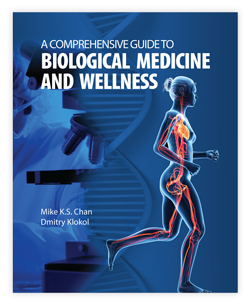
A Comprehensive Guide To Biological Medicine And Wellness
Author/s: Prof. Dr. Mike Chan and Prof. Dr. Dmitry Klokol
Published by Matador, Troubador.co.uk, London.Medical Research: ISBN 978 1789015 249

Cell Membrane Therapy: Clinical Practice In Brain, Liver And Cardiovascular Diseases
Author/s: Prof. Dr. Mike Chan and Prof. Dr. Yuriy Nalapko
Published by Matador, Troubador.co.uk, London – Medical Research: ISBN 978 1838592 509

Efficacy Of Plaqx Forte Therapy For The Maintenance Of Cardiovascular, Blood Vessels And Cellular Health
Author/s: Dr. Yuriy Nalapko, Prof. Dr. Mike Chan, Prof. Dr. Michelle Wong, Dr. Dmitry Klokol, Dr. Pan Shing Yi, Yvonne Cashinn Chia and Hui Rong Yee
Published at Journal of Nutrition Science Research, J Nutr Sci Res 2019, Vol 4(1): 136

Placenta And Marine Extract Supplements, Nano Peptides, Mito Organelles, Phyto-Peptides And Botanicals Applying Advanced Biomolecular Technologies In Regenerative Medicine, Biological Therapy And Natural Healing
Author/s: Dr. Dina Tulina
Published at: 3rd Global Summit on Herbals & Traditional Medicine October 18-20, 2017 Osaka, Japan

LAB RMS PlaqueX Extra Forte Case Study Report
Findings:
✔ LDL Cholesterol Reduction
50% of volunteers experienced reduction of LDL cholesterol.
✔ Visceral Fat Reduction
40% of volunteers experienced reduction of visceral fat volume, ranging from 2.7-7.3cm2.
✔ Cell Integrity Maintained
100% of volunteers showed maintained cell health and integrity.
Chirkin AA et al. Effect of polyunsaturated phosphatidyl-choline on lipid transport system in alcoholic liver injury. Addict Biol. 1998 Jan;3(1):65-70. doi: 10.1080/13556219872353
Cole, L. K., Vance, J. E., & Vance, D. E. (2012). Phosphatidylcholine biosynthesis and lipoprotein metabolism. Biochimica et Biophysica Acta (BBA) – Molecular and Cell Biology of Lipids, 1821(5), 754–761. doi:10.1016/j.bbalip.2011.09.009
Connor WE, Witiak DT, Stone DB, Armstrong ML. Cholesterol balance and fecal neutral steroid and bile acid excretion in normal men fed dietary fats of different fatty acid composition. J Clin Invest. 1969;48:1363–1375.
Dietschy JM, Turley SD, Spady DK. Role of liver in the maintenance of cholesterol and low density lipoprotein homeostasis in different anima
D. Küllenberg,L.Taylor,M.Schneider,U.Massing. Health effects of dietary phospholipids. Lipids Health Dis. 2012; 11: 3.PMCID: PMC3316137.Published online 2012 Jan 5. doi: 10.1186/1476-511X-11-https://www.ncbi.nlm.nih.gov/pmc/articles/PMC3316137/
Gundermann, K. J., Gundermann, S., Drozdzik, M., & Mohan Prasad, V. G. (2016). Essential phospholipids in fatty liver: a scientific update. Clinical and experimental gastroenterology, 9, 105–117. https://doi.org/10.2147/CEG.S96362
J.C. Robichaud, et al., Hepatic uptake and metabolism of phosphatidylcholine associated with high density lipoproteins, Biochim. Biophys. Acta 1790 (6) (2009) 538–551
Kidd, Parris. (1996). Phosphatidylcholine: A Superior Protectant Against Liver Damage. Alternative Medicine Review. 1. 258-274.
Nestel PJ, Havenstein N, Homma Y, Scott TW, Cook LJ. Increased sterol excretion with polyunsaturated-fat high-cholesterol diets. Metabolism. 1975;24:189–198.
Oh SY, Monaco PA. Effect of dietary cholesterol and degree of fat unsaturation on plasma lipid levels, lipoprotein composition, and fecal steroid excretion in normal young adult men. Am J Clin Nutr. 1985;42:399–413.
Robins SJ, Fasulo JM. High density lipoprotein, but not other lipoproteins, provide a vehicle for sterol transport in bile. J Clin Invest 1997;99:380–384.
Simmonds WJ, Hofmann AF, Theodor E. Absorption of cholesterol from a micellar solution: intestinal perfusion studies in man. J Clin Invest. 1967;46:874–890.
Vrins C. L. (2010). From blood to gut: direct secretion of cholesterol via transintestinal cholesterol efflux. World journal of gastroenterology, 16(47), 5953–5957. https://doi.org/10.3748/wjg.v16.i47.5953
Völzke H. Multicausality in fatty liver disease: is there a rationale to distinguish between alcoholic and non-alcoholic origin? World J Gastroenterol. 2012;18(27):3492–3501.
Zeisel SH. A brief history of choline. Ann Nutr Metab. 2012;61(3):254-8. doi: 10.1159/000343120. Epub 2012 Nov 26. PMID: 23183298; PMCID: PMC4422379.



